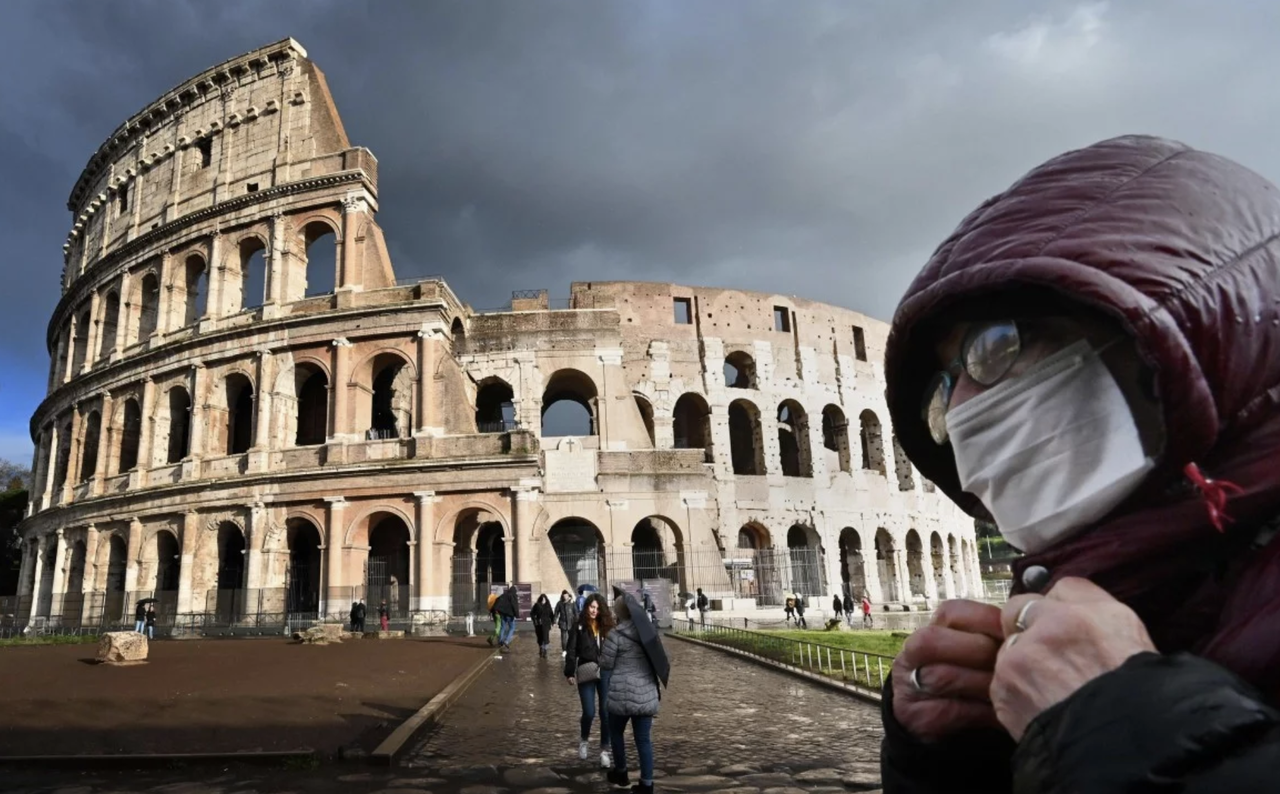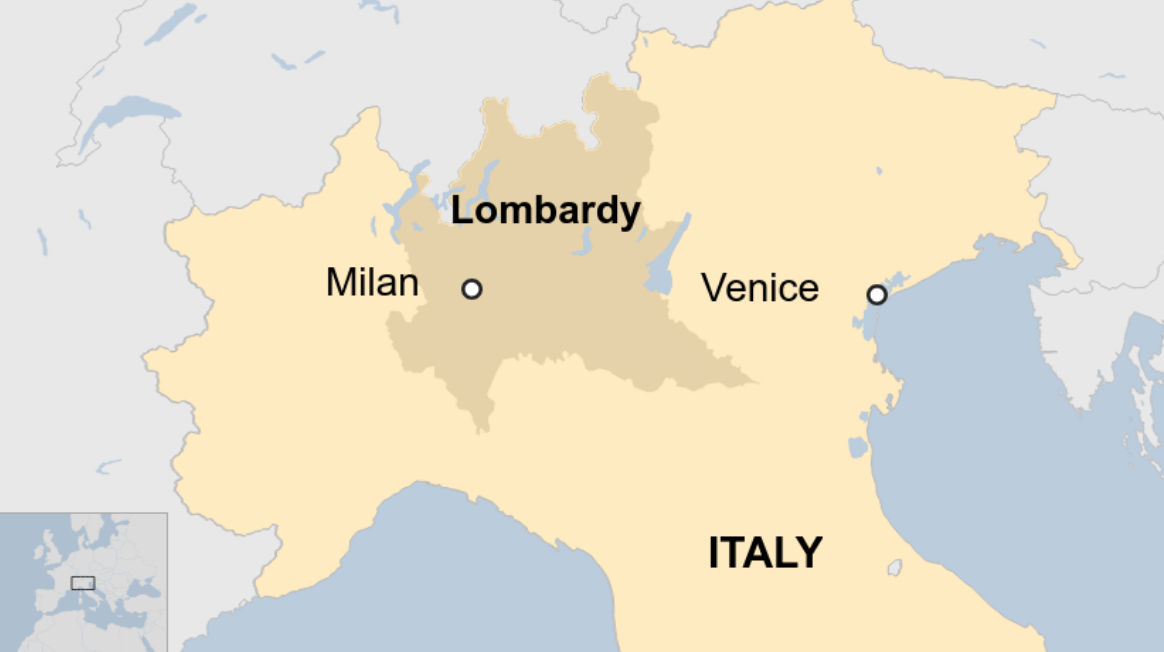Leaked Quarantine Plans Create Chaos As Panicked Italians Sprint For The Exits, Threatening To Spread Virus
As the quarantine begins across the Italian north on Sunday, virology experts at the WHO, CDC and at universities around the world are waiting to see if Rome’s crackdown – coming a little too late, as many have pointed out, given the last two days’ worth of massive increases in the national case total – will work.
With the rules in place until April 3, Bloomberg points out, whether the public and local police and officials go along with the orders will ultimately determine whether they are successful or not.
Italians have become inured to alarming news over the past month as the outbreak has spiraled out of control in Lombardy. But following a flurry of uncontrolled leaks warning about an imminent lockdown as part of the government’s planned emergency decree, restaurants and bars started emptying out and many fled to the train station, where they hopped trains to get out of the region, especially those who had plans to travel elsewhere that were being interrupted by the lockdown.
According to an SCMP reporter in Padua, packed bars and restaurants quickly emptied out as news of a coming lockdown hit, as many people rushed to the railway station. Travellers with suitcases, wearing face masks, gloves and carrying bottles of sanitising gel shoved their way on to the local train.
This appears to have been a phenomenon across the North. The video shows passengers with large bags packed heading toward a cross-country train to take them out of the quarantine zone and into the Italian south, where the virus has penetrated, but infection numbers and deaths remain much lower than in the north.
Footage from Milan train station where suddenly people arrive to flee from the possible quarantine zone pic.twitter.com/gj52lSQgWZ (via @amos8125) #Covid19
— Gregor Peter (@L0gg0l) March 7, 2020
This could be terrible news for the impoverished south: experts have repeatedly warned that southern Italy – best known as an agricultural and fishing center rife with organized crime – doesn’t possess the medical infrastructure to handle a surge in life-threatening cases of pneumonia.
While Andrew Cuomo has repeatedly insisted during his seemingly never-ending series of press conferences that the panic is worse than the virus itself, in Italy, the situation is rapidly deteriorating on both fronts. One epidemiologist described the series of panic-provoking leaks as “pure madness.”
Fortunately, Italian markets were closed during the panic, and now people have more or less accepted the new rules. But at this point, the horse is already out of the barn. Panicked Italians are now traveling around the country, potentially bringing the virus with them.
“The draft of a very harsh decree is leaked, sparking panic and prompting people to try and flee the [then] theoretical red zone, carrying the virus with them,” wrote Italian virologist Roberto Burioni on Twitter. “In the end, the only effect is to help the virus to spread. I’m lost for words.”
However, especially now that the panic has scattered northern Italians across the country, Alitalia is cancelling international flights, but leaving domestic travel uninterrupted (even as fares plummet as Italians mostly shun traveling during the outbreak). But as Bloomberg reports, whether these new intense restrictions impacting nearly 17 million Italians will be enforced and obeyed remains to be seen.
The most salient details of the Italian quarantine are as follows: In the quarantine region, weddings and funerals have been suspended, as well as religious and cultural events. Cinemas, night clubs, gyms, swimming pools, museums and ski resorts have been closed. Restaurants and cafes in the quarantined zones can open between 06:00 and 18:00 but customers must sit at least 1m (3ft) apart. People have been told to stay at home as much as possible, the BBC reports.
Those who willingly decide to break the quarantine could face three months in jail.
Restrictions apply to all of the Lombardy region, which includes many of Italy’s largest cities and most economically important provinces. According to Turkey’s Anadolou News Agency, along with Lombardy, the quarantine includes the cities of Modena, Parma, Piacenza, Reggio Emilia, Rimini, Pesaro e Urbino, Alessandria, Asti, Novara, Verbano Cusio Ossola, Vercelli, Padova, Treviso and Venice.
The order mostly impacts Lombardy, the region around Milan, as well as vast swathes of Piedmont, Veneto, Emilia Romagna and Marche. Venice is part of the affected zone, while Turin, home to the Fiat Chrysler Automobiles NV headquarters, is outside, according to Bloomberg.PM Giuseppe Conte said sports matches will be held without crowds, and that schools in all quarantined locations will be on break until April 3.
Outside the quarantine zone, the decree issues new regulations for the rest of the country, including a recommendation to avoid travel outside home towns unless absolutely necessary, enforcing “social distancing” of one meter in all public venues – that is, encouraging people to stand roughly four feet away from one another – and restricting public events from demonstrations to theater shows.
Elderly people are advised to stay home, and schools and universities will remain closed nationwide until March 15.
Some regions have voiced resistance to different aspects of the order. The Veneto region opposes the inclusion of the Padua, Treviso and Venice provinces in the decree, according to a statement published by Ansa, according to Bloomberg.
Maurizio Rasero, the mayor of Asti, which is in the affected zone, denounced the quarantines as “madness, a disaster we didn’t expect.”
But even in southern Italy where, as we noted above, the outbreak isn’t yet widespread, local governments are taking steps to stop its arrival. The province of Puglia has ordered 14-day quarantines for all entering the province from an affected area. Regional president Michele Emiliano went a step further, telling northerners traveling to his town to turn around and go back.
Even before the outbreak, Italy’s economy was tipping into contraction. Now, the crisis has all but paralyzed business activity in Lombardy, which accounts for one-fifth of the country’s GDP, as well as the rest of the north, which is generally speaking more economically productive than the Italian south.
The impact is clear even in other regions that aren’t subject to the stricter controls. The Pompeii archaeological site near Naples and the Vatican museums are closed until April 3, and an exhibit of Renaissance master Raphael in Rome was halted.
In Rome, the government has decided on Thursday to double emergency spending to 7.5 billion euros ($8.5 billion) to help cushion the economic impact of the virus. It’s also calling up 20,000 doctors, nurses and medical personnel to help deal with the outbreak. Fallout from the virus’s spread is slamming Italy’s key tourism industry, which is worth almost 15% of GDP, at a time when the country is already teetering on the brink of recession.
Sensing the looming threat to economic stability, the EU is playing ball, advising the Italians that their stimulus spending won’t be counted against the bloc’s budgetary thresholds. But will Berlin and Frankfurt play ball when it comes to loosening Germany’s purse strings in violation of the constitutional ‘debt break’?
Tyler Durden
Mon, 03/09/2020 – 02:45
via ZeroHedge News https://ift.tt/3cF1XMN Tyler Durden

